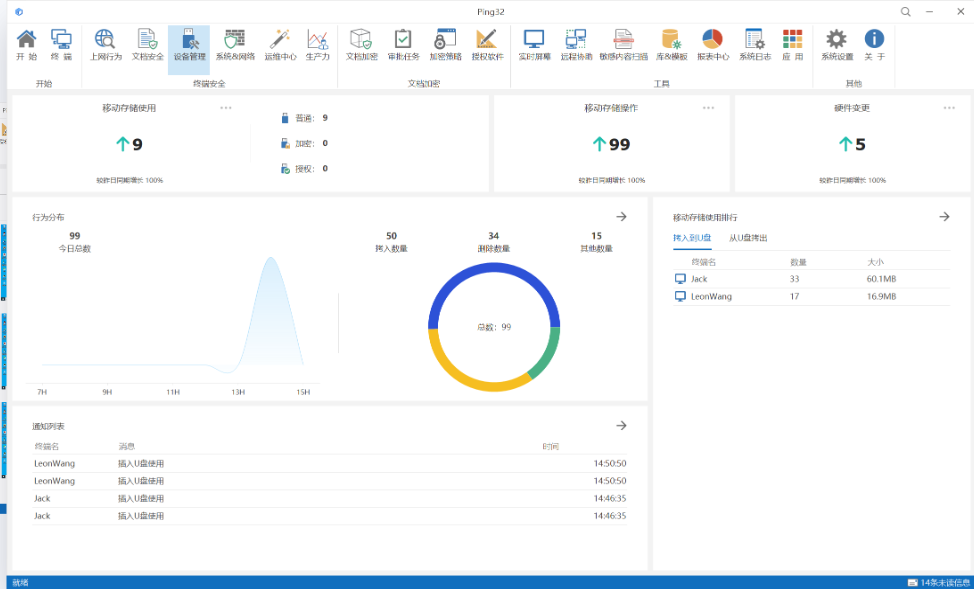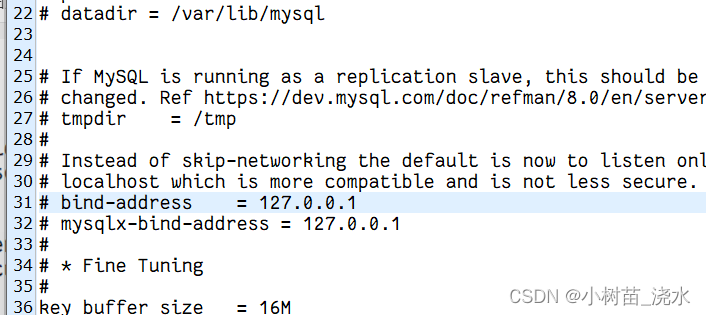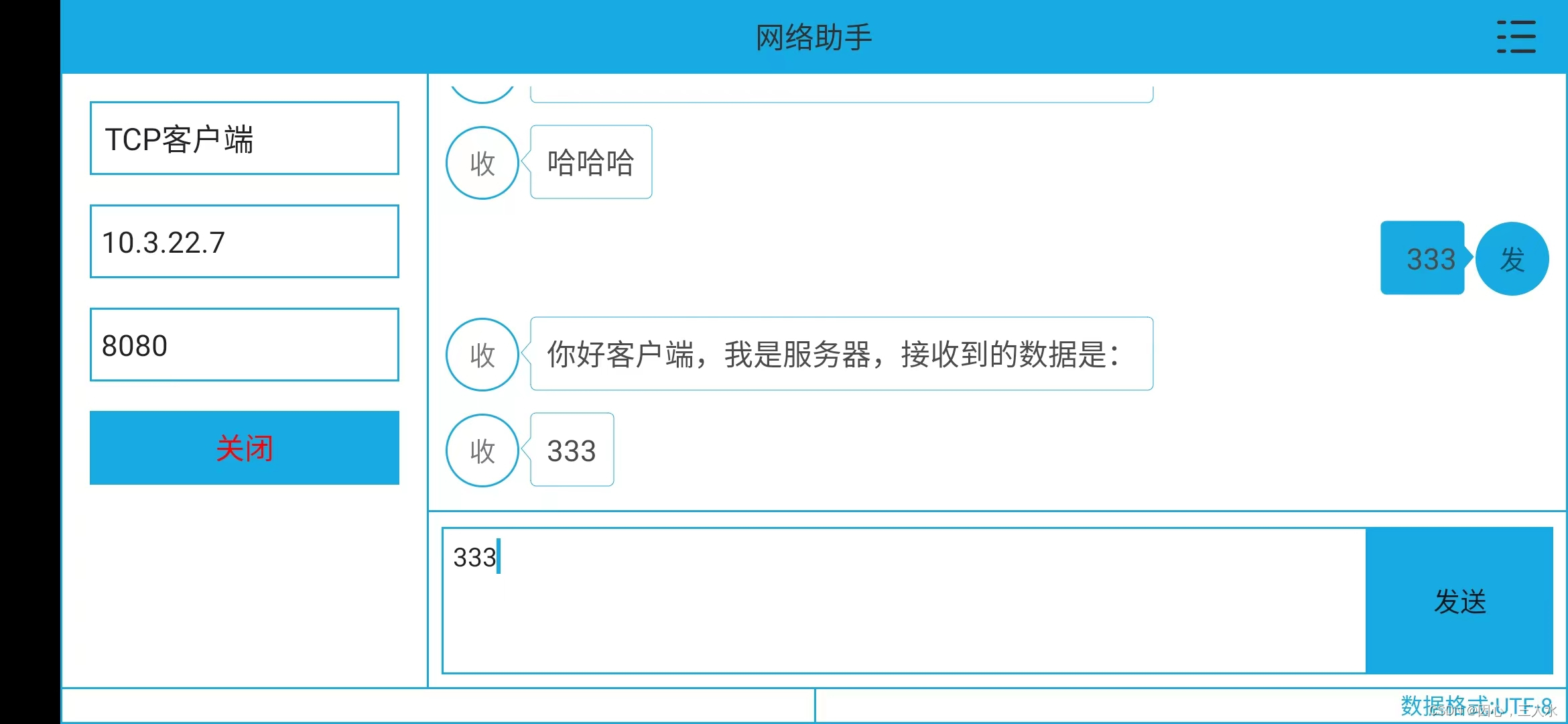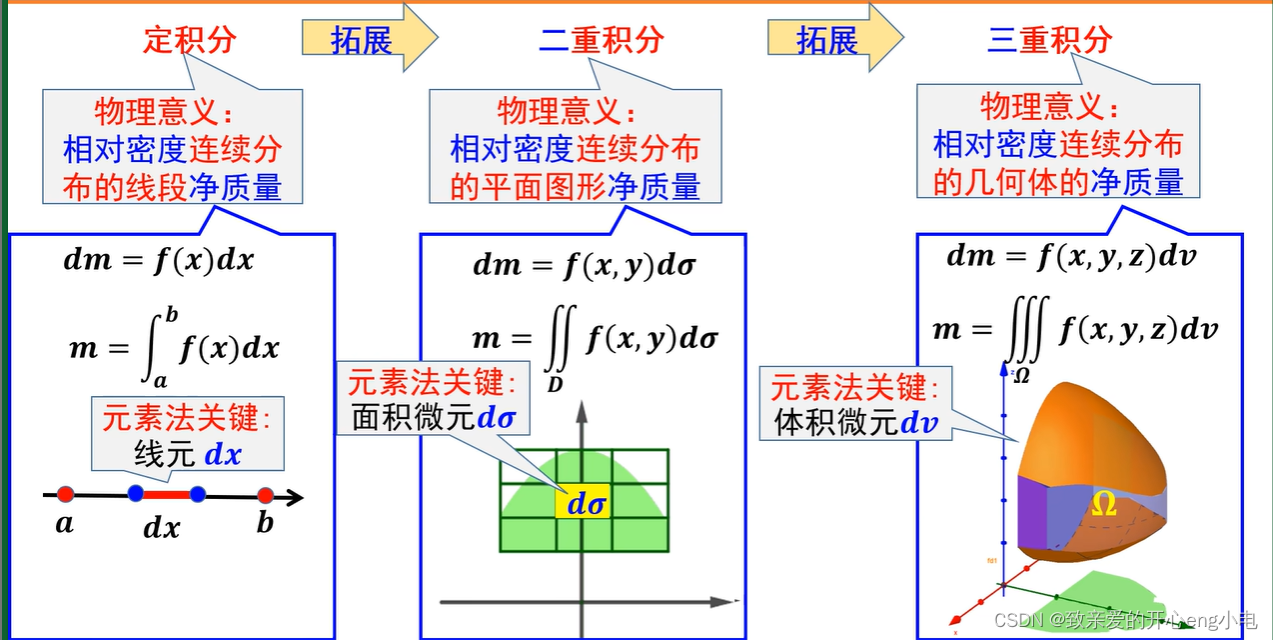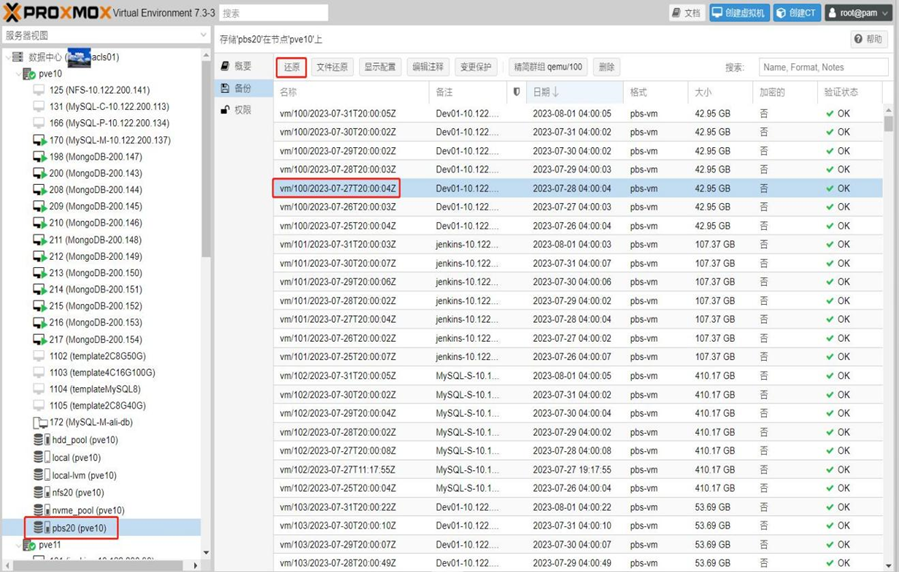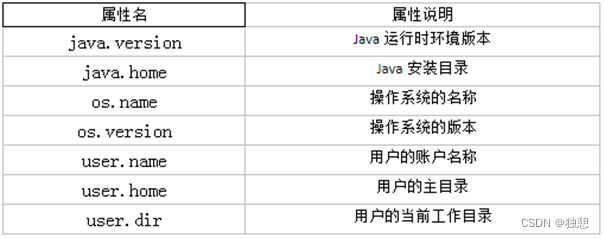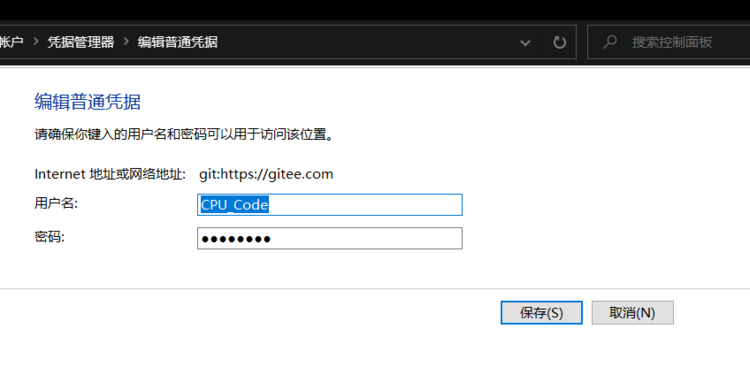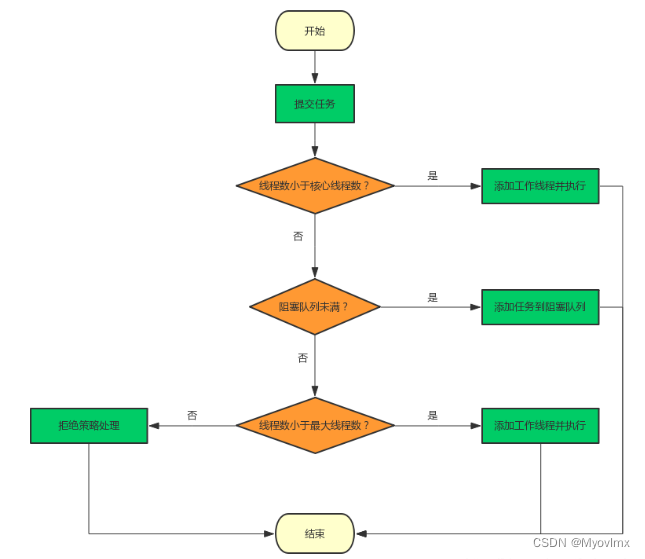LINUX 入门 4
day6 7 20240429 20240504 耗时:240min
课程链接地址
第4章 LINUX环境编程——实现线程池
C基础
-
第3节
-
#define里面的行不能乱空行,要换行就打\
-
typedef是 C 和 C++ 中的一个关键字,用于为已有的数据类型定义一个新的名字。通过typedef可以为数据类型起一个更直观或者更易于理解的名字,也可以用来简化复杂的数据类型声明。例如:unsigned long long int ULLONG; // 为 unsigned long long int 定义了一个新名字 ULLONG -
static void *nThreadPoolCallback(void *arg){ }将
nThreadPoolCallback函数声明为static可能是为了将其作用域限制在当前文件内部,避免其它文件中的函数同名冲突,而不是全局作用域的函数。这样做有助于提高代码的可维护性和可读性,因为这个函数只能在当前文件内部被访问和调用,不会被其它文件意外地使用或修改。
-
-
第5节
struct nWorker *worker = (struct nWorker*) arg;这行代码创建了一个指向
struct nWorker结构的指针worker,并将其初始化为(struct nWorker*) arg。通常这样的语句在多线程编程中会被用到,其中arg是传递给线程的参数,这里将其转换为struct nWorker*类型的指针以便在线程中使用。 -
第6节
pthread_cond_signal和pthread_cond_broadcast是 POSIX 线程库中用于线程同步的函数,通常与条件变量(condition variable)一起使用。pthread_cond_signal函数用于唤醒一个正在等待条件变量的线程。如果有多个线程正在等待条件变量,那么只会唤醒其中的一个。通常情况下,这是因为某个线程执行了某些操作,使得条件变量的条件满足,因此需要通知等待该条件变量的线程继续执行。pthread_cond_broadcast函数用于唤醒所有正在等待条件变量的线程。这个函数会同时唤醒所有等待该条件变量的线程,而不是像pthread_cond_signal那样只唤醒其中的一个。通常情况下,这是在某个线程执行了某些操作,使得多个线程都能继续执行时使用。
这两个函数通常与互斥锁(mutex)一起使用,以实现线程之间的同步。当某个线程需要等待某个条件满足时,它会先释放互斥锁并等待条件变量,而其他线程则可能在条件不满足时进入等待状态。当条件满足时,某个线程会调用
pthread_cond_signal或pthread_cond_broadcast来唤醒等待的线程,让它们继续执行。
1 线程池的使用场景与原理分析
-
使用场景:
-
百万级的client,server多线程 开线程来同时处理不同client发来的message

but开不了那么多thread,linux下一个posix线程占8M
1G=1024M开128个最多
16G内存最多开128*16=2048个thread
-
日志文件
-
disk磁盘操作比memory操作慢不是一个数量级,日志存储到磁盘的文件里,刷新到disk
处理IO读写,准备好写log里的文字是memory操作,
log存到文件是disk操作,会引起thread挂起,等IO就绪。 写log任务放到线程池里
-
-
-
线程池好处
-
避免线程太多,内存memory耗尽
-
避免反复重复创建和销毁thread, 创建完就放池子,用完还回去
-
任务与执行分离(日志写和存储,写内容生成和存到文件)
例子:银行营业厅,办业务的是任务, 柜员是执行

-
-
def:
线程池=
- 任务队列
- 执行队列
- 管理组件 mutex或spinlock加锁 调节任务和执行
2 线程池的结构体定义 threadpool
线程池sdk组件封装software Development Kit
-
任务队列:
任务组成,先定义任务task struct
再任务队列:链表串起tasks 双向链表
//1.定义task struct nTask{void(*task_func)(struct nTask *task);//一个函数指针,指向一个接受 struct nTask* 参数并且没有返回值的函数。这个指针用于表示任务的执行函数。void *user data;//一个指向 void 类型的指针,用于存储任务函数可能需要的额外数据或参数。struct nTask *prev;struct nTask *next; }; // 双向链表
3 线程池的架构分析与实现
1 最底层:系统层,支持层——实现数据结构+宏定义的基本操作
任务队列,执行队列,管理组件
链表(struct)操作:直接用通讯录那一张的宏定义
#define LIST_INSERT(item, list)do{\item->prev = NULL;\item->next = list;\if((list)!= NULL) (list)->prev = item;\(list) = item; \
} while(0)
//二级指针,list要括号(*ppeople)#define LIST_REMOVE(item, list) do { \if (item->prev != NULL) item->prev->next = item->next; \if (item->next != NULL) item->next->prev = item->prev; \if (list == item) list = item->next; \item->prev = item->next = NULL; \
} while(0)//1.定义task
struct nTask{void(*task_func)(struct nTask *task);void *user data;struct nTask *prev;struct nTask *next;
};//2.执行
struct nWorker{pthread_t threadid;struct nWorker *prev;struct nWorker *next;
};//3管理组件 连接worker和task
struct nManager{struct nTask *tasks; //任务队列struct nWorker *workers; //执行队列pthread_mutex_t mutex; //加互斥锁pthread_cond_t cond; //加条件变量,等待满足条件不锁了
};2 接口层 ,在支持层上包一层
这里管理组件nManager就是threadpool,这里对类型起别名用typedef
4个:创建、销毁、加任务、线程涉及的回调函数
typedef struct nManager{struct nTask *tasks; //任务队列struct nWorker *workers; //执行队列pthread_mutex_t mutex; //加互斥锁pthread_cond_t cond; //加条件变量,等待满足条件不锁了
}ThreadPool;static void *nThreadPoolCallback(void *arg){}int nThreadPoolCreate(ThreadPool*pool, int nworker){}int nThreadPoolDestroy(ThreadPool*pool, int nworker){}int nThreadPoolPushTask(ThreadPool*pool, struct nTask *task){}
4 线程池初始化实现
多用才能对接口熟悉
函数—— 参数,函数体,返回值
- 最终function做成sdk,所以做成API接口给其他人调就行
- 初始化struct内四个,除了task
- 堆上malloc出来的动态数据,要memset置零,防止内容不确定野指针了
- 业务功能(callback)一样,但是实际task任务不同,相当于task是callback的具体实现
// API
int nThreadPoolCreate(ThreadPool*pool, int numWorker){if(pool == NULL) return -1;if(numWorker < 1) numWorker = 1; //运行线程没有,那就默认1个// 2 对struct里4个初始化,task外界扔进来不用pthread_cond_t blank_cond = PHTREAD_COND_INITIALIZER; //定义空白锁的条件变量memcpy(&pool->cond, &blank_cond,sizeof(pthread_cond_t));//blank_cond 中的 pthread_cond_t 结构体的内容复制到 pool->cond 中。pthread_mutex_init(&pool->mutex,NULL);int i = 0;for(int i =0; i < numWorker; i++){struct nWorker *worker = malloc(sizeof(struct nWorker));//创建失败if(worker ==NULL){perror("malloc");return -2;}memset(worker, 0,sizeof(struct worker));worker->manager = pool;//创建线程int ret = pthread_create(worker->threadid, NULL, nThreadPoolCallback, worker); //创建成功返回0,失败1if(ret){perror("pthread_create");free(worker);return -3;}LIST_INSERT(worker, pool->worker);}return 0; //创建成功, callback是业务功能,一样,但是不等同于task任务,但是执行的任务不同}5 线程池的线程回调函数实现
核心:三件事
判任务队列里有任务
没就等
有就拿出执行,取用户数据
// API
// callback!=task
static void *nThreadPoolCallback(void *arg){struct nWorker *worker = (struct nWorker*) arg;while(1){pthread_mutex_lock(worker->manager->mutex); //对任务加一把锁while(worker->manager->tasks == NULL){//判有任务,没就等,有就拿出执行,取用户数据pthread_cond_wait(&worker->manager->cond, &worker->manager->mutex);}struct nTask *task = worker->manager->tasks;LIST_REMOVE(task, worker->manager->tasks); //把任务队列tasks的首节点task执行完了,移出来pthread_mutex_unlock(worker->manager->mutex);task->task_func(task->user_data);}free(worker);// but没有退出的break的地方,struct nWorker里引入终止标识
}
问题:but没有退出的break的地方,struct nWorker里引入终止标识
//2.执行
struct nWorker{pthread_t threadid;int terminate;struct nManager *manager; //worker需要有manager联系方式struct nWorker *prev;struct nWorker *next;
};
同时
static void *nThreadPoolCallback(void *arg){struct nWorker *worker = (struct nWorker*) arg;while(1){pthread_mutex_lock(worker->manager->mutex); //对任务加一把锁while(worker->manager->tasks == NULL){//判有任务,没就等,有就拿出执行,取用户数据if(worker->terminate) break; //是1就是终止pthread_cond_wait(&worker->manager->cond, &worker->manager->mutex);}if(worker->terminate){// 退出最外层while,先解锁,不然可能死锁了pthread_mutex_unlock(worker->manager->mutex); break; }struct nTask *task = worker->manager->tasks;LIST_REMOVE(task, worker->manager->tasks); //把任务队列tasks的首节点task执行完了,移出来pthread_mutex_unlock(worker->manager->mutex);task->task_func(task->user_data);}free(worker);// but没有退出的break的地方,struct nWorker里引入终止标识
}6 线程池的任务添加与线程池销毁
terminate置1就退出来了
int nThreadPoolDestroy(ThreadPool*pool, int nworker){struct nWorker *worker = NULL;for(worker = pool->workers; worker != NULL; worker = worker->next){worker->terminate;//都置1}//信号什么时候往下走,广播使所有条件满足让信号往下走pthread_mutex_lock(&pool->mutex);pthread_cond_broadcast(&pool->cond);// 唤醒所有广播和等待用的同一把锁,不会有死锁,什么东西没听懂pthread_mutex_unlock(&pool->mutex);pool->workers= NULL;pool->tasks = NULL;return 0;
}
任务添加
int nThreadPoolPushTask(ThreadPool*pool, struct nTask *task){//通知thread有task来了pthread_mutex_lock(&pool->mutex);LIST_INSERT(task, pool->tasks);//通知条件变量可满足,唤醒一个threadpthread_cond_signal(&pool->cond);pthread_mutex_unlock(&pool->mutex);}7 线程池代码gdb调试与bug修改
gcc -o threadpool threadpool.c -lpthread
一堆错 有问题, 视频里面没有写main后面的函数!! 根本看不懂了,这里后面没法调
//
// sdk --> debug thread pool#if 1#define THREADPOOL_INIT_COUNT 20
#define TASK_INIT_SIZE 1000void task_entry(struct nTask *task) { //type //struct nTask *task = (struct nTask*)task;int idx = *(int *)task->user_data;printf("idx: %d\n", idx);free(task->user_data);free(task);
}int main(void) {ThreadPool pool = {0};nThreadPoolCreate(&pool, THREADPOOL_INIT_COUNT);// pool --> memset();int i = 0;for (i = 0;i < TASK_INIT_SIZE;i ++) {struct nTask *task = (struct nTask *)malloc(sizeof(struct nTask));if (task == NULL) {perror("malloc");exit(1);}memset(task, 0, sizeof(struct nTask));task->task_func = task_entry;task->user_data = malloc(sizeof(int));*(int*)task->user_data = i;nThreadPoolPushTask(&pool, task);}getchar();}#endifgdb调试,适合小工程
gcc -o threadpool threadpool.c -lpthread -g
gdb ./threadpool
打断点:
-
在判断的地方加breakpoint,比如while if
有可能出现空指针
b 行数 b 64 (while判断) b 76 (list remove) b 115 (list insert) r(就是run) c(continue) 没有出现视频里的问题nThreadPoolCreate里少
memset(pool, 0, sizeof(ThreadPool));b 80 (task->task_func)b 201(pushtask)rcc报错了 并没有解决了,还是segmentation fault
Thread 3 "threadpool" received signal SIGSEGV, Segmentation fault. [Switching to Thread 0x7ffff6fee700 (LWP 12096)] 0x0000000000400f08 in task_entry (task=0x604a80) at threadpool.c:170 170 int idx = *(int *)task->user_data;太丑了,放弃了,sourceinsight长得太丑了,还卡的一批,用vscode连虚拟机ok了
这节课基本没听懂!!!云里雾里乱起八糟的
最后调出来了是这个问题
nThreadPoolCallback(void *arg)里面的
task->task_func(task->user_data);改成task->task_func(task);


